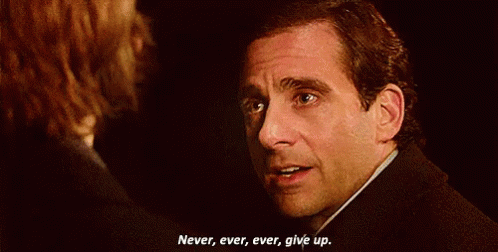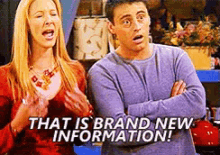The case for product discovery: A 4-step guide to saving time and money
.jpeg)
.png)
.jpeg)
.png)

Your newest product is going to change the face of your industry. You know it, your executive team knows it, and your development team is eager to be a part of this monumental undertaking. Everything you’ve ever helped develop has led to this singular, unparalleled product.
The project, however, is not without risk. The new product is a substantial departure from your existing suite of digital offerings. It will also cost a pretty penny to plan and develop a prototype, let alone make a final version available to the general public. You’re concerned your product is so different from your usual offering that your customer base could reject it wholesale. A misstep here could cost your company millions, but success would elevate your company to the highest echelon of SaaS innovators.
Product discovery exists specifically to avoid the anxiety surrounding the development of new products and features. It’s a process that prevents product teams from investing in ideas with no discernible market—a considerable waste of financial and human capital. Instead of creating solutions to problems no one is having, product discovery justifies why your product should exist and identifies who will actually use it.
Great ideas gain speed under their own momentum, but it’s worth slowing down enough to perform product discovery properly to set yourself up for a successful product launch. A product discovery process looks like this:
Researching your prospective or existing customer base is a means of understanding your prospective customers’ desires and needs. Discovering the points of friction users grapple with or the limitations of current solutions provide ample opportunity for eventual ideation. Instead of relying on assumptions or current trends, the best way to build a product that appeals to a user base is to ask them directly. Tried-and-true approaches to collecting customer feedback include:
Direct feedback cultivated using these methods is valuable because customers are unlikely to hold back when asked what can be improved. However, established companies have another method for identifying friction in the user experience: customer behavioral data. The ways users interact with your product—and especially the points at which they tend to stop using it—provide first-party insight into where improvements could be made.
Behavioral data isn’t limited to highlighting negative experiences requiring improvement. A deep dive into your analytics may illuminate unanticipated opportunities for growth. The heavy usage of a minor feature by your most avid customers may warrant further exploration to understand what appeals to these power users. Supporting data can be gathered through further data analysis, experimentation, or even a direct query of the segment of users so enthralled by the feature.

A great idea is often accompanied by bias, which can affect the way you ask or look for customer feedback. Questions directed at users shouldn’t be constructed to lead to a conclusion you already have at the risk of missing a bigger point, better opportunity, or massive pitfall.
Consider the infamous case of New Coke. Coca-Cola’s answer to Pepsi’s increasing market share is often touted as a legendary product failure. However, the actual decision to replace the popular original formula was grounded in research and feedback. Customers indicated they overwhelmingly preferred the taste of the “new” formula to the classic one.
There was, however, a fatal flaw in the actual questions being asked. Customers said they preferred the new taste to the old, but Coca-Cola never asked whether customers would prefer New Coke as a replacement of the original. Thus, the company moved forward with false confidence in their product. The result? $4 million in wasted development costs and $30 million in unused product.

Research may result in a laundry list of problems to solve. It’s up to you and the rest of the development team to determine which issues can be solved with existing solutions and which require brand new mechanisms. Careful research may also help you determine the severity of the remaining problems. This will give you and the team a sense of what can and should be addressed first and foremost in any new product or feature.
With a customer problem firmly in mind, you can get to work on brainstorming solutions. Initial ideation sessions shouldn’t be tethered to constraints. Lofty, unrealistic ideas are often the starting point for more tempered product innovations down the line.
Sometimes during product discovery, a single concept leaps off the whiteboard as the obvious solution. Other times, a half dozen ideas may present as potential answers to the question you’re asking. In the latter case, ideas should be categorized and sorted to determine the idea which best addresses the customer needs while factoring in development and cost considerations. Chisel ideas down by first eliminating the impossible and then the implausible before finally settling on an idea worthwhile and realistic enough to invest in.
Your development team is bound to have a favorite ideation process, and popular ideation techniques include:
This stream-of-consciousness approach helps spark discussion by attempting to illustrate your otherwise hidden thought process. Hen-scratch your customer problem directly in the middle of a whiteboard. From there, write down the associations that come to mind. Connect these thoughts to the main concept with lines or arrows and continue writing new associations stemming from both the main concept and the links that follow.

Is your UI in need of some TLC? Drawing your product, the problem, or a hypothetical solution is a good way to get a sense of the physical space of your issue and how users would interact with it. Sketching also helps provide a visual example of workflows and context to more complex theoretical discussions surrounding a product or feature that doesn’t yet exist.
Storyboarding takes sketching to the next level by organizing thumbnail sketches into scenes to tell a story. Each “story” is organized around the problem your product will need to solve. Creating sequential illustrations of how a user currently experiences friction or would use a new feature can help teams visualize the strengths or shortcomings of any given idea.
In a perfect scenario, the best idea is also the cheapest and easiest to build. In the real world, teams are restricted by developmental costs and technological constraints, which means many ideas must be compromised in some way before development. Some compromise is expected—perhaps even likely—but an idea should only be moved to the development phase if it fully addresses the problem you intend it to solve in the first place.
Building your new product should be an iterative process. The earliest versions of a prototype prioritize function over aesthetics to ensure a product actually does what it’s intended as it’s intended. Once function has been achieved and optimized, the prototype can be fitted for the smoothest user experience. It may take several iterations of a product to achieve one that is both functionally and experientially usable by your target audience.

After testing the prototype thoroughly, you can take it for a walk by A/B testing a group of users. Let’s say you developed a chatbot to help guide new users through onboarding. You could create a segment of users in your target demo and split them into two separate groups, funneling one to a flow with your new chatbot and the other to your current and unaltered flow. One group would act as the experiment and the other as the control group. By doing this, you can compare user behaviors and conversion rates between the two and determine whether or not your prototype produces the results you anticipated.
If A/B testing reveals lackluster results, further iterations will be necessary to realign your product with its purpose. When it appears you’ve finally landed on an iteration that performs, it pays to broaden the scope of your testing. Include segments outside of your target group to ensure that your new product or feature doesn’t negatively impact their experience. This also provides valuable data on how your prototype performs with users outside of your targeted market group, informing possible changes that may attract “casual” users without compromising on original intent.
All the time and effort expended on earlier steps in the product discovery process pay off here. The product you wind up with may be a long way off from the barely legible sketch you hashed out on the whiteboard. However, the final product solves the issue you set out to fix. Just as importantly, you’ve developed a product you know has a prospective user base because you identified it back in Step 1.
How you reveal your new product to the world is largely a matter of marketing. At Appcues, we’ve developed a product launch planner for optimizing your product launch and creating the biggest splash. Looking for a more subtle way to tell customers what’s new? Our modals and tooltips are also handy for highlighting new features and driving seamless adoption for new and existing users alike.

Mass adoption by thousands or even millions of users will undoubtedly reveal new insights about your new product. A savvy product manager would be wise to ABD: Always Be Discovering. Ask your users: what features do they love? What aspect needs improvement? Study the behavioral data streaming in and identify friction points and opportunities for growth. Staying attuned to how your customers experience your new product can serve as the launching point for future features or even entirely new products—products which you will, of course, research, ideate, and test appropriately before release.